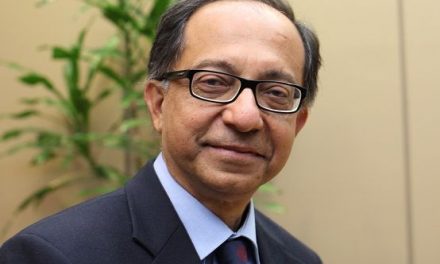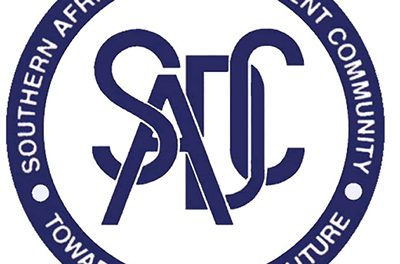
Yet another looming financial crisis

By Martin Khor, Executive Director of the South Centre, addressing the Intergovernmental Group of Twenty-four (See note below)
On the basis of standard indicators, the global economy has not fully recovered from the 2007-08 financial crisis. Policies pursued in the US and Europe in response to the crisis have failed to restore rigorous and sustained growth but produced significant financial fragility. Despite the recent upturn, global growth remains well below the rates seen before the outset of the crisis.
Debt in both advanced and developing economies has accumulated massively as a result of the ultra-easy monetary policies pursued in the US and Europe. Asset and credit bubbles and excessive risk taking have resurfaced, as was the case before the crisis. As a result, central banks are hesitant in normalizing monetary policy. But the longer the ultra-easy monetary policy is pursued, the more difficult it will be to get out of it without creating significant instability and economic contraction. In any case, as it happened in the US in 2007-08, the process of debt accumulation, financial bubbles and excessive risk taking can end in a severe crisis even in the absence of a fundamental shift in monetary policy in major advanced economies.
Because of their closer integration into the international financial system, almost all developing countries are now vulnerable to the onset of another financial crisis, irrespective of their balance-of-payments, external debt, net foreign assets and international reserve international positions, although these could play an important role in the way such shocks impinge on them.
A large majority of developing countries, notably those in Latin America, Africa and South Asia, have negative net asset positions (their external liabilities exceeding external assets by a large margin). Most of them are now running current account deficits because of weak commodity prices and sluggish export markets in the major economies. Even those with positive external asset positions and current account balances are vulnerable to external financial shocks because their financial markets are closely linked with markets in advanced economies.
During the Lehman turmoil in 2008, currency and financial markets of countries with strong reserve and foreign asset positions such as China came under severe pressure. At that time, however, financial shocks were short-lived thanks to a significant monetary easing in the US and Europe in response to the crisis. A sharp reversal of capital flows now can wreak havoc in currency and financial markets of all developing countries and can push deficit countries not only into a liquidity crisis but also a debt crisis.
Developing countries have made significant efforts to accumulate unprecedented amounts of international reserves since the beginning of the decade. However, in the majority of cases, these came from capital inflows rather than current account surpluses. Thus, there are corresponding foreign liabilities. In fact, foreign liabilities exceed reserves by a large margin since an important part of capital inflows have been used to finance current account deficits. Therefore, in most cases reserves can turn out to be highly inadequate in meeting the foreign exchange shortfalls that could result from a combination of a sharp and sustained decline of capital flows and export earnings.
In the event of a severe and sustained liquidity and balance-of-payments crisis, flexible exchange rates adopted in most emerging economies since the recurrent crises of the 1990s and early 2000s may well be unable to absorb the shocks and allow the economies to achieve a soft landing to a lower level of activity. Rather, currencies can come under severe stress, resulting in serious difficulties for corporations which have been borrowing heavily in reserve currencies as well as for sovereigns in many low income countries which have gone to international markets for the first time, taking advantage of low interest rates and favourable risk appetite.
As shown over and again, hiking domestic interest rates under such conditions cannot be expected to restore capital inflows and balance-of-payments equilibrium. Such an action would in all likelihood make matters worse by pushing the economies into deeper recession.
Preparing for the next financial crisis
Developing countries should make contingency plans about how to respond to a renewed crisis rather than assuming/hoping that no such shocks would ever happen. They can strengthen South-South mechanisms and shore up other international arrangements in anticipation of such a crisis.
In responding to a severe balance-of-payments shock, developing countries should not simply go back to business as usual and use their reserves and borrow from the IMF and adopt austerity in order to remain current on their obligations to foreign creditors and investors and keep their capital account open. They should, instead, seek to involve private lenders and investors in the resolution of liquidity and currency crises by introducing, inter alia, exchange restrictions and temporary debt standstills.
It would be extremely difficult to avoid debt crises after so many years of financial excesses and debt build-up. Should the world economy turn down and incomes collapse, an important part of the debt piled up since 2008 could become unpayable, notably the debt incurred by private residents and sovereigns in emerging and developing economies (EDEs). The international community should not muddle through in resolving international debt crises, as done during the Latin American crisis in the 1980s and more recently in the Eurozone. Rather, they should seek orderly and equitable debt resolution drawing on widely accepted principles of insolvency regimes.
In the event of a payments crisis, developing countries should undertake measures to ration foreign exchange, prioritizing imports of essential medicines and in order to sustain domestic production. This will mean imposing controls on non-essential imports for the time being. These measures should be supported by the IMF, where necessary, through lending into arrears, but such lending should be for current account transactions – not debt service – in order to avert import compression and contraction in economic activity.
The IMF lacks resources to effectively address any generalized sharp contraction in international liquidity that may result from the normalization of monetary policy in the US and/or a massive flight to safety.
In any case major central banks, notably the US Federal Reserve, as the main originators of global financial fragility that now threatens the South, should assume responsibility for the provision of adequate international liquidity. This can be done through a large special drawing rights (SDRs) allocation. The IMF can designate major central banks to purchase SDRs from EDEs who want to use the SDRs allocated to them. A decision can also be made to allocate SDRs only to EDEs or to non-SDR countries excluding Eurozone members. In this way, balance sheets of major central banks would be expanding by purchasing SDRs from those who want to use them. Alternatively, the US Federal Reserve and other major central banks can act directly as a quasi-international lenders-of-last-resort to EDEs facing severe liquidity problems through outright purchase of locally and internationally issued sovereign bonds of these economies to shore up their prices and to provide liquidity. They could also establish swaps to supplement reserves of non-reserve issuing countries.
At the onset of a crisis, developing countries should activate various South-South mechanisms for liquidity provisions; they should be delinked from IMF programs and extended. There is the Latin American Reserve Fund established in 1978 by seven Andean countries to provide balance-of-payments support and improve investment conditions of reserves held by member countries. It has been operating without linking liquidity provision to IMF programmes.
There are two other arrangements—the Chiang-Mai Initiative Multilateralization (CMIM) of East Asian countries and the Contingent Reserve Arrangement (CRA) of BRICS (the grouping of Brazil, Russian Federation, India, China, and South Africa).
The CMIM had started as bilateral swaps to complement, rather than substitute, the existing international facilities before it was multilateralised at the end of 2009. The initiative has never been called upon; during the Lehman collapse, the Republic of Korea, and Singapore approached, instead, the US Federal Reserve and Indonesia secured finance with a consortium led by the World Bank. CMIM has several shortcomings making it almost unusable. It does not have a common fund, but is a series of promises to provide funds, with each country reserving the right not to contribute to the specific request by a member. Its size is too small, some 1.5 per cent of total GDP of the countries involved; and access beyond 30 per cent of quotas is tied to an IMF program.
The CRA is widely praised as a strong political sign of solidarity among EDEs. While it is too early to pass judgement on it, it does not look very much different from the CMIM. It is designed to complement rather than substitute the existing IMF facilities. Its size is even smaller than the CMIM, less than one per cent of the combined GDP of BRICS, and access beyond 30 per cent is tied to the conclusion of an IMF programme.
Revitalizing international action on the part of the South
The times call for the ramping up of political solidarity among developing countries. The stakes are getting too high now to continue with business as usual. Developing countries could consider convening a series of discussions among themselves about the policy responses required in the event of another widespread financial disorder. Such a discussion could also involve examining priorities and the agenda for change in global economic governance arrangements. The contributions of the G24, as well as the G77 and other groupings of developing countries, will be critical and timely. The South Centre stands ready to do its part in these efforts.
Raison d’Etre
The traditional Annual Meeting of the Boards of Governors of the World Bank Group and the International Monetary Fund took place in Washington DC from 09 to 15 October 2017. On the sidelines of the meeting the Intergovernmental Group of Twenty-four on International Monetary Affairs and Development also known as G24 held its Ninety-eighth Meeting of Ministers and Governors on 12 October. The group which represents the interests of developing countries in financial issues sent a strong message for reform in the international financial systems. The meeting was chaired by H.E. Abraham Tekeste, Minister of Finance and Economic Cooperation of Ethiopia.












































